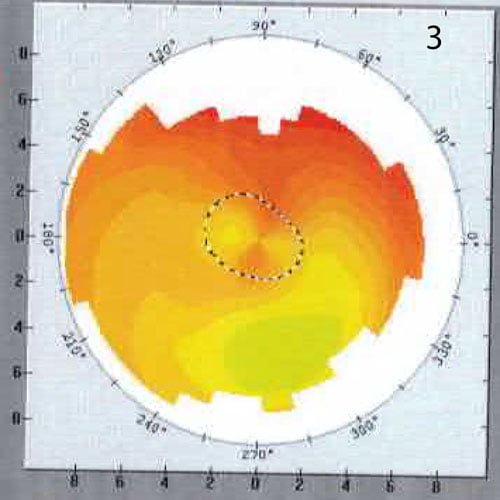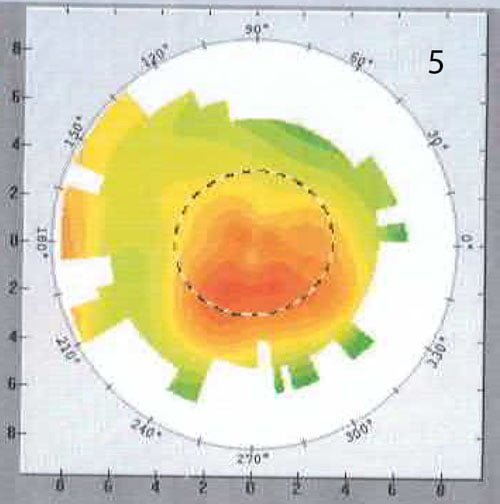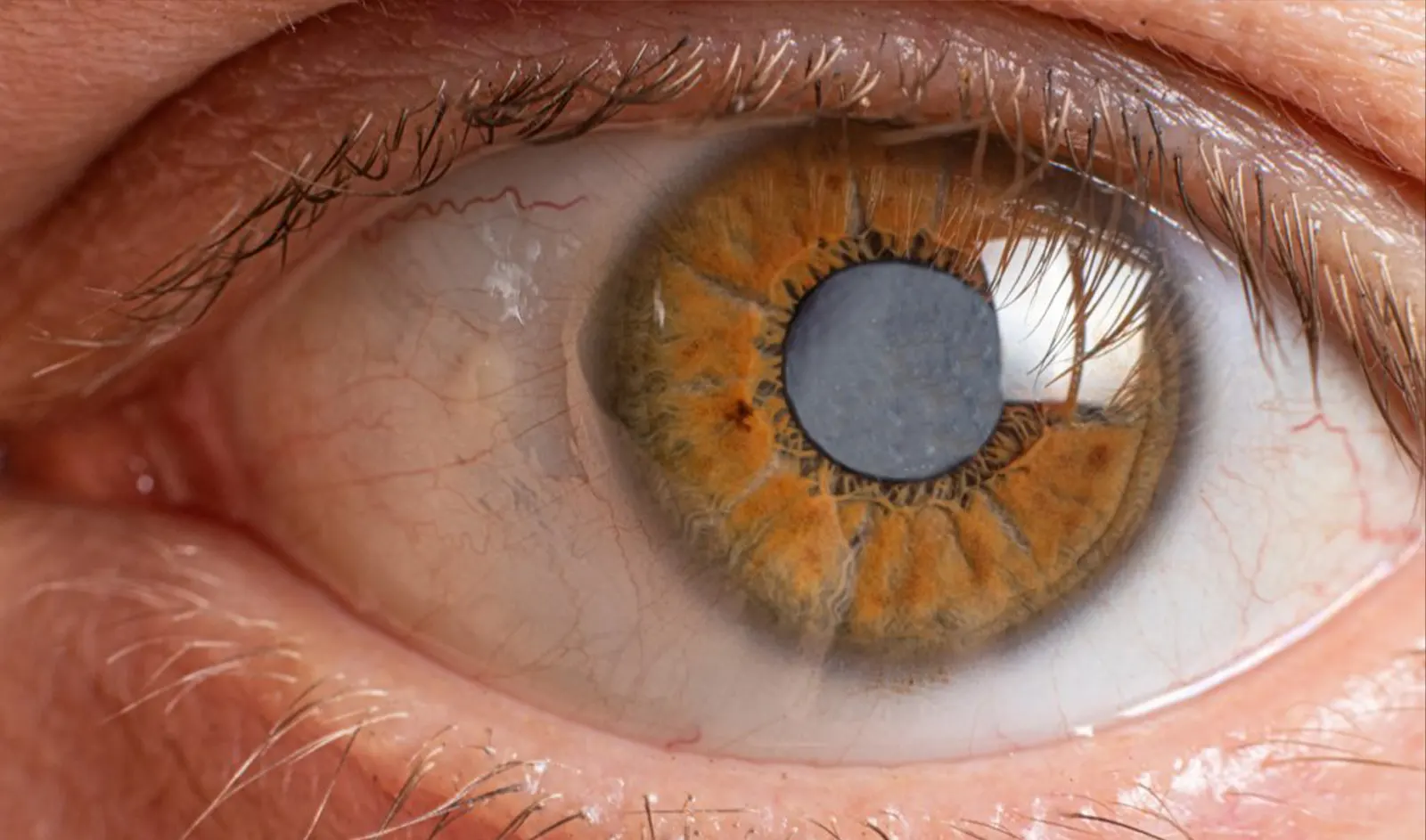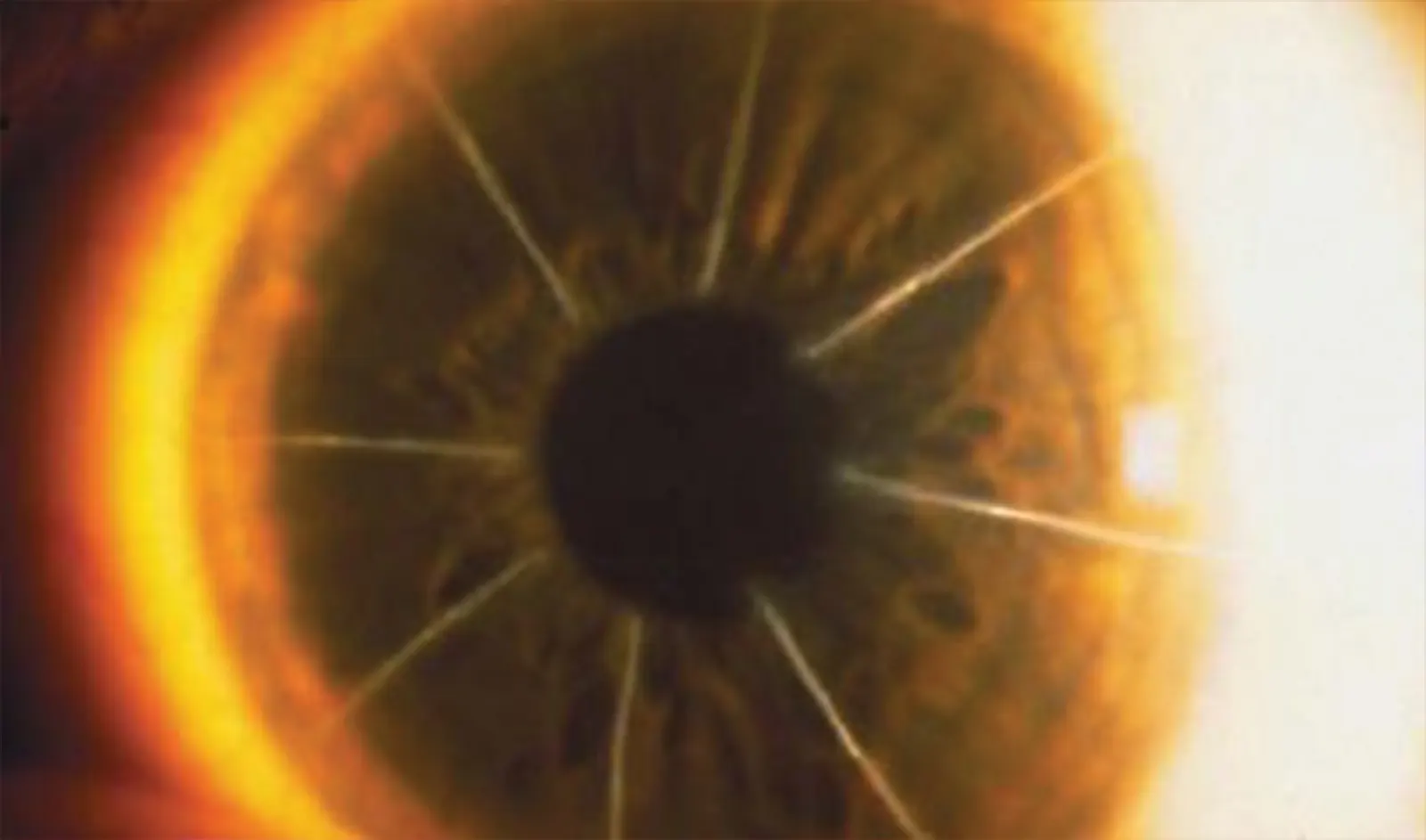Topographic guided ablation for repair of corneas is completely different than anything else ever done in the United States- it is a way to reconstruct the cornea by selectively removing tissue that is causing warpage or distortion to re-normalize the surface to return good vision. Whether the corneal distortion/warpage is from trauma, corneal disease such as corneal ectasia or keratoconus, poor surgical outcome such as de-centered LASIK or PRK, or the distortion from Radial Keratotomy (RK), the cornea can be re-normalized with Topographic Guided Ablation on the Wavelight EX500 laser, market name Contoura.
Although in use in the rest of the word for some years, it has now become FDA approved in the United States. FDA approval was granted for use on primary eyes, with treatment of corneal distortion or warpage considered a precaution to be done by only experienced surgeons. Dr. Motwani has submitted for publication the San Diego Protocol specifically for topographic guided ablation in using the United States FDA approved software. The San Diego Protocol is also unique because for the first time it also incorporates the knowledge gained in the LYRA Protocol, which uses same Contoura system used to create uniform conreas in primary laser vision correction. Using the San Diego Protocol, we believe that not only can we in many cases fix the corneal warpage and distortion, butalso eliminate the refractive error so the patient no longer has to wear glasses in cases that do not have severe warpage.
Some patients will require two procedures because of the extent of their corneal warpage, the initial reconstructive repair, and then a second one to finish adjusting the power of the cornea to correct for residual refractive correction so glasses/contacts won’t need to be worn. For severe ectasia where corneal correction is not fully possible, the goal is to stabilize the cornea and avoid a corneal graft or transplant, and also normalize the cornea enough so that simple glasses or contacts can be used to correct vision.
Dr. Motwani is one of the very few surgeons in the United States performing topographic guided corneal reconstructive repairs, and likely has some of the most experience in the U.S. in this area. He has already corrected many types of corneal warpage, from trauma due to scissors penetration of the cornea, to warped corneas from RK surgery, to severely de-centeredpast LASIK/PRK laser surgery. In fact, many, if not all of the complications from past laser eye surgery can now be corrected. Many patients have not been able to see properly, if at all, from these eyes for many years, and now vision has been restored.
When combined with corneal strengthening with Corneal Cross-Linking, treatment of Kerotoconus and other Corneal Ectasias such as post-LASIK corneal warpage can now also be corrected. The goal is to prevent patients from requiring a corneal transplant, and to stop the corneal warpage, regularize the cornea as much possible using the Contoura reconstructive repair, and allow for stability of the cornea and good resulting vision. Dr. Motwani is one of the only surgeons in the United States currently performing this procedure.
Topographic guided ablation for corneal repair, or T-CAT has been developed for over a decade in Europe, and the system is now available at select sites in the United States. Corneal repair requires a different level of surgeon knowledge and deep understanding of the topographic guided process, and very few sites that are certified for Wavelight Contoura perform repairs with the system.
When the full power of the T-CAT system is used, dramatic corrections can be done that have never been able to be performed before in the United States. Even large abnormalities of the cornea can be repaired:
A San Diego surgeon who had severe corneal warpage from RK performed 30 years prior:
Pre Op refraction: +6.50, -3,75 x 60
Pre-Op Topography showing massive warpage of cornea:

Post-Op uncorrected vision post T-CAT repair: 20/25+ with a refraction of +1.50, -0.75 x 30. Enhancement for this correction planned:
Post-Op Topography:

A 63 year old San Diego Female with a severely decentered laser correction performed in 1999:
Pre-Op Topography:

Post-Op Topography with vision of 20/20:

A 74 year old San Diego Female with decentered laser ablation for hyperopia done in 2002 with subsequent laser procedures attempting to fix:
Pre-Op Topography:

Post-Op Topography with vision of 20/25:

A 24 year old San Diego female who had laser ablation while she tilted her eyes downward. The resulting elliptical laser shape was corrected and vision was 20/20+
Pre-Op Topography:

Post-Op Topography:


Cataract Surgery is the most performed surgical procedure in the United States, and has a phenomenal track record for improving…
Read More
The treatment of trauma with topographic-guided ablation depends on the level of scarring caused by the trauma, the position of…
Read More
In the dynamic world of eye care, keratoconus treatment has become a focal point due to the condition’s impact on…
Read More